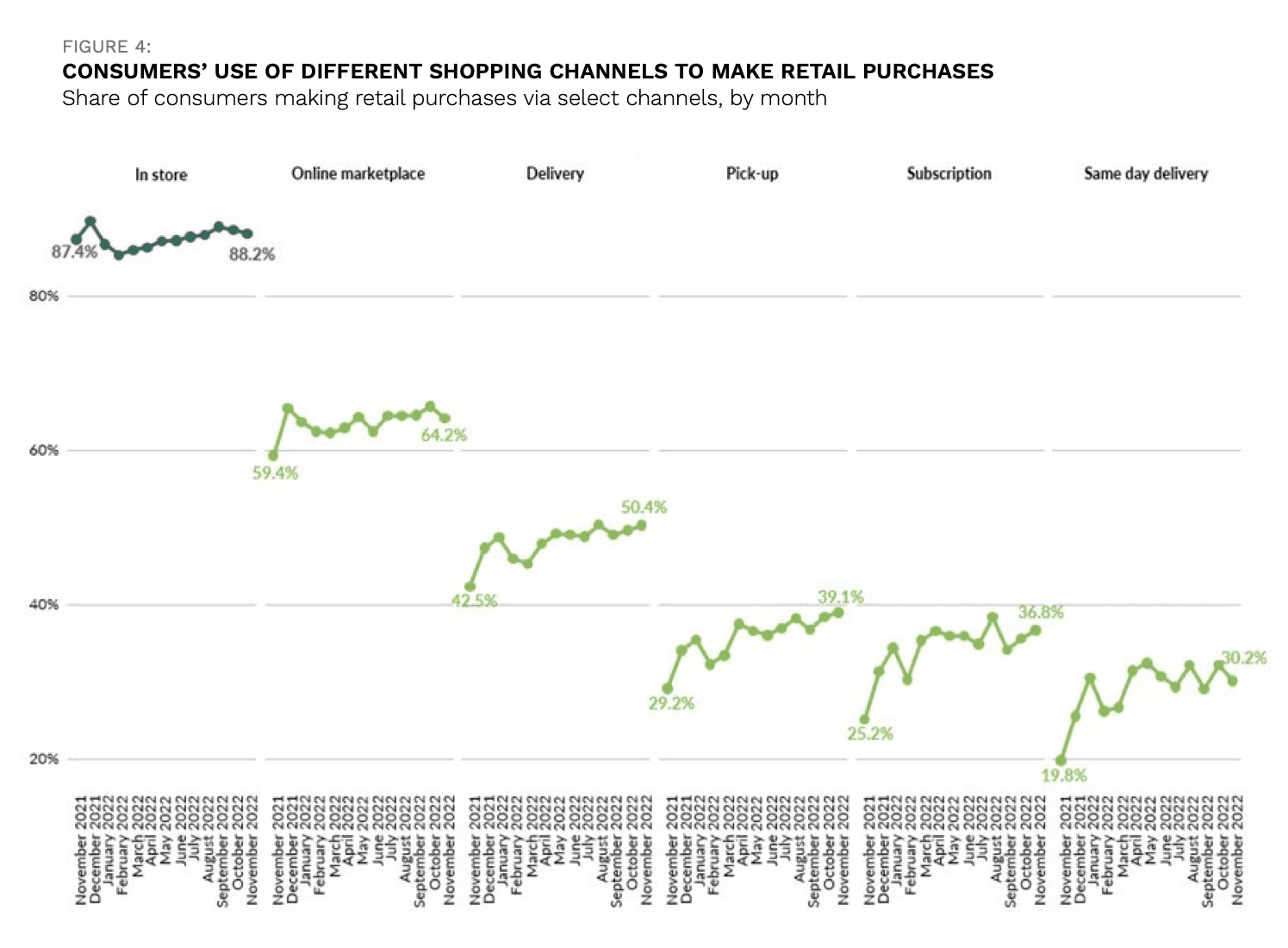Study: Online Sales Growth Chugs on Despite Gloomy Forecasts

A roaring return to brick-and-mortar shopping and pullbacks in some eCommerce categories gives the impression that online sales are down. They’re not.
While 2022 did see Amazon’s stock price contract by 50% — equating to roughly $1 trillion of lost valuation — it’s as much about investor jitters as it is about consumers embrace of online shopping activity at Amazon, Walmart.com or other major eCommerce sites.
In the PYMNTS year-end 2022 report, “12 Months Of The ConnectedEconomy™,” looking at the digital engagement of nearly 34,000 U.S. consumers across the 67 activities, findings in the “Shop” category reveal that stock prices and actual retail activity don’t necessarily correlate.
According to the data, liberation from COVID restrictions that sent consumers flooding back to brick-and-mortar stores did not prevent growth in online purchasing, which in fact grew.
As the study states, “consumers continued to shop online, and they did so more with each passing month. By the end of 2022, 131 million individuals across the country had online retail purchases delivered every month, on average.”
Among marquee findings: 64% of consumers shopped on digital marketplaces in November 2022 for a 3% year-over-year increase. Moreover, 50% of consumers surveyed ordered on merchants’ retail sites for home delivery representing an 18% increase between November 2021 and November 2022.
Read the report: 12 Months Of The ConnectedEconomy™

The healthy activity was seen effectively across the board, as the report notes that “retail subscription delivery options also gained popularity in that 12-month timeframe. By November 2022, 37% of consumers were using retail subscriptions. This compares to 30% who used retail subscriptions one year prior.”
Additionally, 30% of consumers ordered retail items for same-day delivery in November 2022, an increase of 5 percentage points over the 25% who used same-day delivery 12 months prior.
These findings contradict dire outlooks and forecasts from market watchers who rallied behind the notion that the end of COVID equated to a bursting eCommerce bubble that ballooned during the depths of the pandemic in 2020 and 2021.
Read: Amazon’s Third-Party and Small Business Sellers Lead ‘ Record-Breaking’ Holiday
An Exaggerated Demise
PYMNTS’ Karen Webster took issue with downbeat predictions and forecasts in a recent column, noting that “According to PYMNTS’ 2022 national Black Friday study of 2,439 consumers, more of them shopped online on Black Friday (25.8 percent) than in the physical store (17 percent). And the number of consumers who shopped in the physical store decreased 23% year over year.”
Webster joked, “I guess these consumers forgot that online shopping is off the table now since we’ve all gone back to the physical store.”
Further supporting the position that eCommerce activity continued at a healthy clip in 2022 despite product trade-downs and pullbacks in nonessential items.
In a Dec. 29 blog post, Amazon reported that “This holiday season, Amazon customers purchased nearly half a billion items from small businesses in the U.S. alone. Trending small business categories included Home, Beauty, Kitchen, Toys, and Apparel.”
Similarly, Walmart said that by last summer its marketplace seller count had increased 60% since 2021 and that consumer web traffic had hit 120 million monthly visitors by then.
Read: The Greatly Exaggerated Demise of Alexa, eCommerce, and the Card Networks
For all PYMNTS retail coverage, subscribe to the daily Retail Newsletter.
